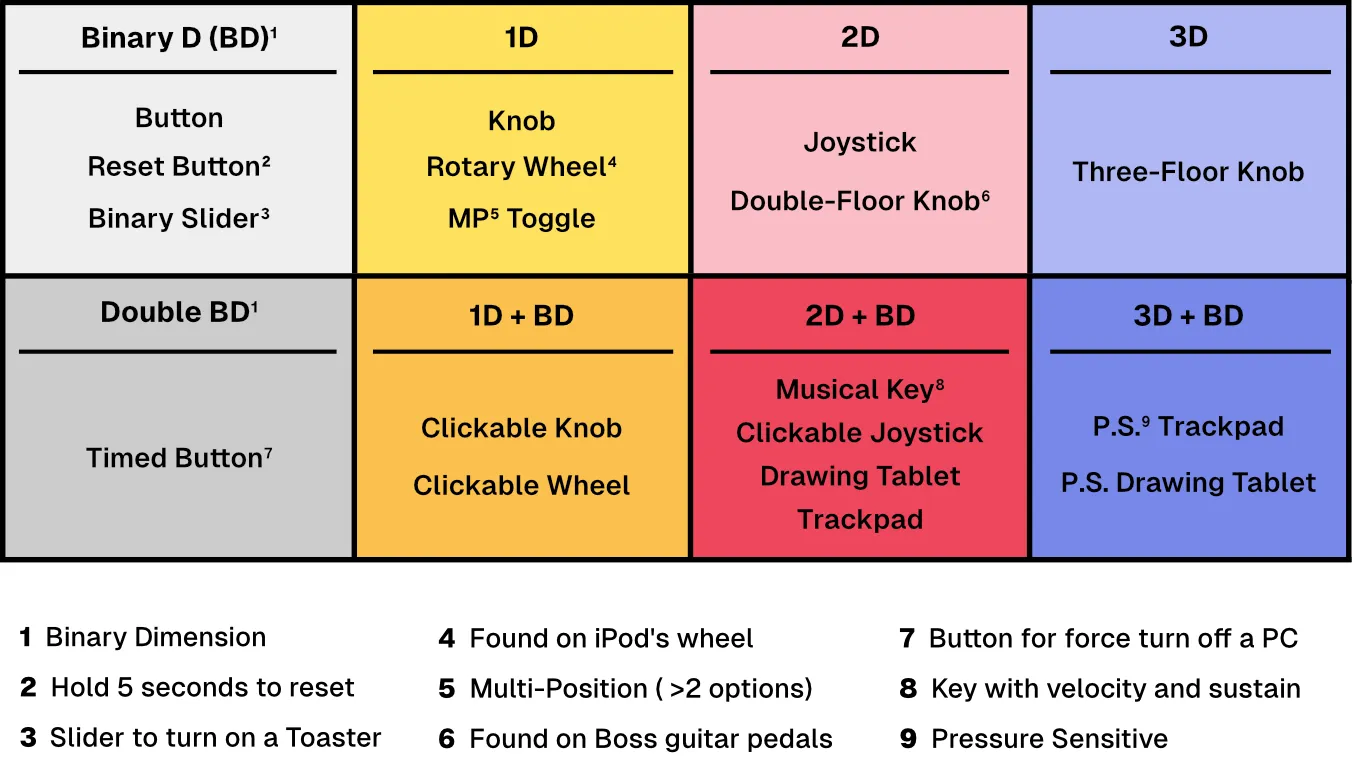DICE
Dimensions of Interaction Complexity on tangible user interface's Elements
- 5 Mar 2024
- ⌘
- 3 min read
Table Contents
It is focused on tangible handheld devices controlled by fingers. At first glance, is divided by how many dimensions the logic of an Interaction affect the hardware, it is defined by it end electronical output rather than the movement/manipulation way of the user’s hand or fingers.
To put an example if we press the Key A, we will move vertically the key down, it will be one dimensional movement, but from the device perspective it only will know if either the key B is pressed or not, meaning that it is a Binary Dimensional Element. If we rotate a knob, usually done by two fingers, our fingers are moving in a two-dimensional position, but what the device is receiving is one dimension, like in plus or minus increments.

This table illustrates the types of gestures corresponding to each combination of dimensions and fingers used, providing a comprehensive overview of the gestural interactions possible in handheld devices.
Summarize gestures
catagolize by dimensions
By Dimensions
1D: binary or linear elements
- Button
- level
- side wheel (volumen type)
- toggle
- MP*** Level
- Knob
- rotary wheel
2D
two array linear or binary plus a linear interaction element
- 2-axis buttons
- Joystick
- 2-Axis gear level () (not handheld but for the examples)
- Clickable Knob
- Clickable rotary wheel
- two-floor knob (Boss pedal)
3D
- Joystick with push
- multi-floor knob
- clickable rotary wheel
By Fingers Used
The second way that affects the user experience is how many fingers do you need at least, for the interactions to happen. Of course, you can use two fingers with all the interaction elements that are used for the one finger interactions, or put more effort and less practicality or having less ergonomics and use one finger